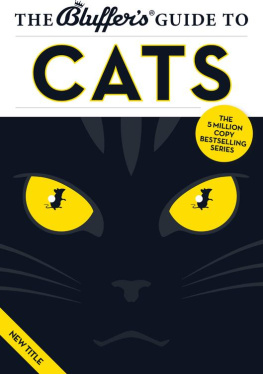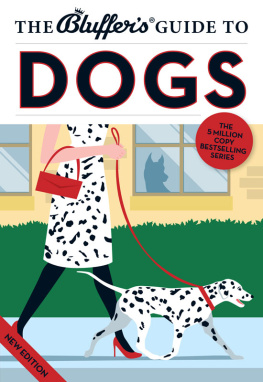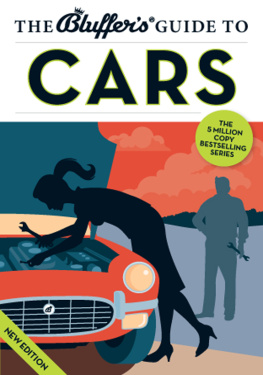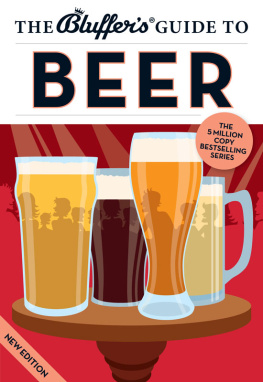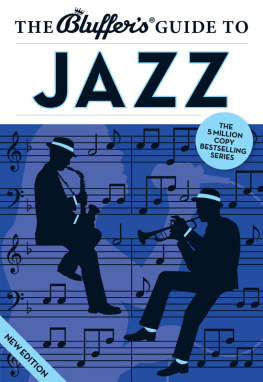Halls - The Bluffers Guide to Cats
Here you can read online Halls - The Bluffers Guide to Cats full text of the book (entire story) in english for free. Download pdf and epub, get meaning, cover and reviews about this ebook. City: London, year: 2015, publisher: Bluffers Guides, genre: Humor. Description of the work, (preface) as well as reviews are available. Best literature library LitArk.com created for fans of good reading and offers a wide selection of genres:
Romance novel
Science fiction
Adventure
Detective
Science
History
Home and family
Prose
Art
Politics
Computer
Non-fiction
Religion
Business
Children
Humor
Choose a favorite category and find really read worthwhile books. Enjoy immersion in the world of imagination, feel the emotions of the characters or learn something new for yourself, make an fascinating discovery.
The Bluffers Guide to Cats: summary, description and annotation
We offer to read an annotation, description, summary or preface (depends on what the author of the book "The Bluffers Guide to Cats" wrote himself). If you haven't found the necessary information about the book — write in the comments, we will try to find it.
Halls: author's other books
Who wrote The Bluffers Guide to Cats? Find out the surname, the name of the author of the book and a list of all author's works by series.
The Bluffers Guide to Cats — read online for free the complete book (whole text) full work
Below is the text of the book, divided by pages. System saving the place of the last page read, allows you to conveniently read the book "The Bluffers Guide to Cats" online for free, without having to search again every time where you left off. Put a bookmark, and you can go to the page where you finished reading at any time.
Font size:
Interval:
Bookmark:

There is, incidentally, no way of talking about cats that enables one to come off as a sane person.
Dan Greenberg, writer and humourist

T here is one thing you need to know from the beginning. The cat is the most popular pet in the world. There are hundreds of millions of owned cats, not to mention those that choose to live independently, and numbers are continuing to rise as emerging economies discover the delights of the feline companion. Cats have, with a little help from man, adapted to live comfortably in every continent apart from Antarctica, although it is possible that as you read this, they may well be navigating the Southern Ocean, aiming in its general direction. The cat has world domination as its ultimate goal.
Whether you like it or not, cats are here to stay and statistically you are very likely at some stage to want or need to impress a cat lover (or ailurophile, as they are also known, if you want to start establishing your bluffing credentials early on). If you need any more incentive to read on, partners are often chosen based on their response to a beloved cat, and vice versa. It pays to know how to endear yourself to the human object-of-your-affections pampered puss.
The cat is a very enigmatic creature, which means that over thousands of years of domestication, they have given nothing away about what they are really about. If you ever approach a cat and look deep into its eyes, you can almost hear it saying, Yeah? Go on, clever dick, what am I thinking right now? In fact, this books first lesson is NEVER to stare deep into their eyes. This is highly challenging behaviour and you may not get away with it.
To paraphrase Winston Churchill, the riddle wrapped in a mystery inside an enigma that is called a cat is basically laughing at you. Humankind has consistently, and very efficiently, managed to learn very little about the cat as a species, maintaining a persistent state of unconscious incompetence. To quote the now-infamous words of Donald Rumsfeld, There are things we dont know we dont know. What has happened in reality is that cat lovers have made it up as they go along, believing all sorts of myths and fancies about the cats likes and dislikes, and resisting with great vigour any scientific or well-informed information to the contrary. What they think they know about cats is much more funfor most.
Your dilemma therefore is: do you bluff the real stuff and stand up and be counted among the few who actually have an inkling of whats going on, or do you bluff the myths? The Bluffers Guide to Cats will steer you through a winding path of nods to the nonsensical (why spoil a happy delusion?) via a few interesting highways of real facts. You may then choose which road to take.
The true bluffer acknowledges the enigmatic nature of the cat and is equally enigmatic regarding his or her own knowledge on the subject. True to the bluffers credo, this is very much a question of not so much what is said but what is left out. If you nod slowly, with a suitably thoughtful expression, for a sufficient period, you may stop a conversation in its tracks before it really gets started. If you feel something still needs to be said, you can use one of the feline fillers listed at the end of each chapter to act as a subject changer. If all else fails, you can always go with the ultimate showstopper: But of course, can we ever say the cat is actually domesticated?

I have noticed that what cats most appreciate in a human being is not the ability to produce food but his or her entertainment value.
Geoffrey Household, British thriller writer

Science moves on and facts cease to be facts, replaced by new facts that also have an inevitable shelf life (see Samuel Arbesmans The Half-Life of Facts: Why Everything We Know Has an Expiration Date). This guide will inform aspiring bluffers based on the current facts and popular beliefs, always ensuring that you avoid serious full-on debates. Far better to maintain a dignified silence, interspersed with one or two fairly indisputable observations, to ensure the audience is kept guessing about the true expert in the room. Whatever you do, always speak with confidence and authority the true key to successful bluffing.
With those basic thoughts in mind, enjoy your journey of discovery.
Sir Winston Churchill, Abraham Lincoln, Charles Dickens, Nostradamus, the Duke of Wellington, Queen Victoria, Sir Isaac Newton, Florence Nightingale, Beatrix Potter, Monet, William Wordsworth, Horatio Nelson and Victor Hugo.
Quote whichever name you feel best suits the audience, for example Horatio Nelson if you are at the Yacht Club, or Nostradamus in the company of conspiracy theorists.
I t is always useful to show knowledge of taxonomy (classification of species), just in case you find yourself in the kind of situation when the word cat is replaced with feline. Many within the veterinary and cat welfare fields will use the term cat or feline interchangeably, but it generally goes no further than that. You may however wish to impress your peers when visiting natural history museums or zoos, in which case you might need to quote from the following (take a deep breath, and memorise as much as you can): All living organisms are classified into class, order, family, genus and species. The domestic cat is classified as a carnivorous (order = Carnivora) mammal (order = Mammalia) of the Felidae family. This includes the sub-groups (Genera) of Felinae, Pantherinae and Acinonychinae. The Acinonychinae has a sole member, the cheetah (so called because its claws do not retract) but the Pantherinae family includes the lion, tiger, panther and leopard. The Felinae includes all the small cats, for example lynx, serval, ocelot, caracal, jaguarundi, jungle cat and Pallass cat (a sufficient number to remember to underline your knowledge). The pet cat is a domesticated subspecies of Felis silvestris known as Felis catus. You may never need to use this fact but it sets the scene for your further journey into the modern domestic cat and its evolution.
The theory of evolution suggests that the type of animals that survive are those that change and develop to take advantage of the varying climates and conditions on Earth. Few have managed this better than the cat. All carnivores evolved from the miacids, small weasel-like carnivorous forest dwellers that might just have had retractable claws, or protractile claws to be strictly accurate (because they extend and retract), just like the domestic cat we know and love today. Many of them became early versions of cat, the most renowned being the sabre-toothed tiger with its massive scythe-shaped upper canines. One thing is for sure, the tabby cat was not once a sabre-toothed tiger the species became extinct over 13,000 years ago. It is generally agreed that all cats can trace their ancestry back to the Pseudaelurus, a medium-sized cat-ish animal that roamed central Asia some 11 million years ago. By 3 million years ago, a variety of felines existed that were similar to those of today but even more diverse. That exhausting yomp through time brings you to the present day.
Font size:
Interval:
Bookmark:
Similar books «The Bluffers Guide to Cats»
Look at similar books to The Bluffers Guide to Cats. We have selected literature similar in name and meaning in the hope of providing readers with more options to find new, interesting, not yet read works.
Discussion, reviews of the book The Bluffers Guide to Cats and just readers' own opinions. Leave your comments, write what you think about the work, its meaning or the main characters. Specify what exactly you liked and what you didn't like, and why you think so.

